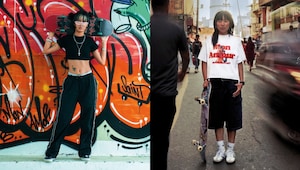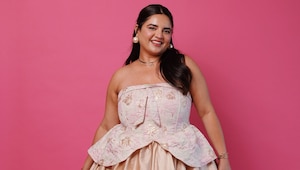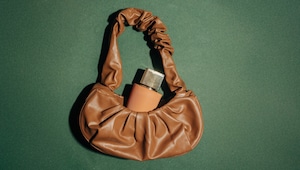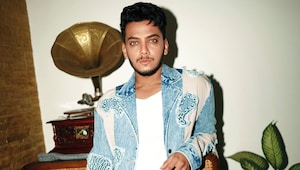
Breaking down the challenges of inclusive and adaptive fashion for people with disabilities in India
Ashima Bhan, Rainna Goel, Zoe Zora, and others address the limitations of disable-friendly fashion that is both functional and stylish.

"This top is too tight!”; “I don’t like the colour of this shirt.”; “Why is the neckline so low?”; “I wish I’d find a bigger size in this.”—We are all guilty of frequently complaining when we shop! But these issues are nowhere close to what a person with disability faces—tasks such as buttoning up a shirt or pulling up a pair of jeans can cause severe discomfort.
While travelling in the Delhi metro, I had a spontaneous conversation with Neelam, a teacher for children with disabilities, who articulated her fashion problems aptly. “I love wearing sandals. However, due to my clubfoot, I never find something that fits me! Even if I do (rarely), it is extremely uncomfortable,” shares Neelam.
According to the World Health Organization, as of March 2023, one in every six people—or 16 per cent of the world’s population—experiences significant disability. And while the fashion industry in India is shifting towards diverse and inclusive options, a number of individuals with disabilities still struggle to find clothing that can accommodate their physical needs.
Disability rights activist Malvika Iyer, a bomb blast survivor who lost both her hands and severely damaged her legs at the age of 13, says, “Personally, I have not come across any Indian brand, fast-fashion store, thrift store, or even a boutique where I could find something to wear that suits my needs.”
One of the primary reasons for the lack of options in India, compared to inclusive brands available internationally, is awareness. There is so much misconception and lack of education around persons with disabilities that it often translates into inconsideration for the demographic, perpetuating exclusion and marginalisation. “The fashion industry doesn’t consider the shape of a person who is in a wheelchair, whether they have a shorter body or a bigger stomach because of a seated position. As a quadriplegic with limited hand function, I often have to alter the size of my clothes to look good when I am seated,” says Zoe Zora, a disabilities and mental health advocate as well as a fitness enthusiast. Thus, resorting to makeshift solutions or relying on assistance from others is a daily routine for individuals with disabilities. “My mother would always help me button up my jeans and modify my clothing with velcro,” shares Malvika. Zoe agrees, stating that even tiny sartorial details such as buttons make a huge difference. “Back zips are extremely hard to put on, even for someone without a disability...can you imagine how difficult it is for someone in a wheelchair?” she says.
Ashima Bhan, the founder of Aaraam Se—an inclusive lifestyle brand—traces back to the cause of the problem. “It is only now that design schools are including adaptive clothing in their syllabus, which explains insufficient awareness and hence the lack of designers in this category,” she explains. Besides, the few adaptive clothing options available in India are often expensive, and such price points emerge as a barrier to access. “The amount of research that goes into understanding this market and an individual’s specific needs, unique workmanship followed by low manufacturing quantity can factor into the prices of adaptive clothing being comparatively high,” Ashima shares.
Designers as well as the fashion industry seem to be overlooking individuals with disabilities—not ready to perceive them as a consumer base. “There is a lack of Indian brands catering to this community as there is less awareness about the problems persons with disabilities face on a daily basis,” admits Rainna Goel, founder of Cur8ability, an adaptive clothing line. “Additionally, since people with disabilities constitute a minority group, brands are unsure of the demand for such products.” Ashima says the market is big, “but because there is no awareness, the takers are few." The result? Representation of this demography is often limited to occasional fashion shows or charity events that include persons with disabilities as models.
At its core, adaptive fashion aims to dismantle the barriers that traditional clothing may pose for people with specific needs. “Right now, if clothes are designed for those with disabilities, it is inclined more towards functionality, overlooking the style component. I absolutely love fashion, but due to the lack of stylish adaptive options, I have to compromise. I am often forced to choose between function or fashion,” says Zoe.
Considering factors such as limited dexterity, sensory sensitivity, and mobility constraints, adaptive clothing needs to go beyond adjustable velcro or magnetic closures, reinforced seams and also use the right type of materials in order to provide both functionality and comfort. “There were so many clothing options that were completely out of the picture for me because the material was not stretchable enough to accommodate my prosthetic hand,” shares Malvika.
With advancements in technology and innovative design approaches such as 3D printing and smart textiles, there exists a wealth of untapped potential for revolutionising the landscape of adaptive clothing. It is crucial for designers to acknowledge and prioritise inclusivity by incorporating adaptive elements into their collections that can be seamlessly integrated into everyday fashion. Zoe hopes that “one day, ‘adaptive fashion’ would no longer be a special category for people with disabilities—it should just be ‘fashion’... you can find the product you need whether you have a disability or not”. Ashima agrees and feels that it is time for the industry to step up and make fashion truly accessible for all. “Hopefully, in the near future, there are going to be more independent designers or bigger players who are going to invest in this category in India and globally as well,” she concludes.
Designers speak
Ashima Bhan Founder, Aaraam Se

“It is only now that design schools are including adaptive clothing in their syllabus, which explains insufficient awareness and hence the lack of designers in this category.”
Rainna Goel Founder, Cur8ability

“There is a lack of Indian brands catering to this community as there is less awareness about the problems persons with disabilities face on a daily basis.”
This article originally appeared in Cosmopolitan India March-April, 2024 print issue.
Also Read: No one does the over-sized look better than to-be mom, Deepika Padukone
Also Read: Do women make better leaders than men?
more from Fashion

A love letter to florals and the beauty of growing beyond the lines

Meet the Nepal skaters turning anime, Y2K and metal music into a fashion movement

Six fashion insiders on the chaos, clarity, and creativity behind their wardrobes

The curvy girl’s guide to wearing every “scary” trend—and absolutely owning it

The goth-girl fashion bible for a darkly romantic winter wardrobe

Eight cities, eight stories—check out where India’s matcha lovers get their fix

How the fragrance boom is changing the way we wear perfume every single day

Vishal Jethwa on fear, family, and the fashion moment that helped him fight imposter syndrome

How to survive party season without burning out your body

Can a beauty founder afford to look ‘unbeautiful’?
